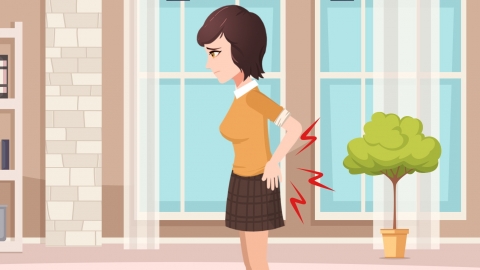What are the causes of low back pain after cesarean section?
Low back pain after cesarean section may be caused by poor posture, hormonal changes, lumbar disc herniation, lumbar muscle strain, pelvic inflammatory disease, and other factors. Management should be based on the specific condition. It is recommended that the patient promptly seek medical attention at a hospital to determine the exact cause and receive appropriate treatment as directed by a physician.

1. Poor posture: After cesarean delivery, mothers often maintain the same posture for extended periods while caring for their baby, such as bending forward while breastfeeding or holding the baby on one side. This causes continuous tension in the back muscles and increased pressure on the lumbar spine, making back pain more likely. To improve this, mothers can use a nursing pillow to assist with breastfeeding and maintain a correct sitting posture to avoid prolonged bending of the waist.
2. Hormonal changes: During pregnancy, estrogen, progesterone, and other hormone levels rise in the female body, causing relaxation of the pelvic joints and ligaments to accommodate fetal growth and childbirth. After delivery, hormone levels drop sharply, and the body requires time to recover. During this period, the stability of the lumbar joints decreases, making back pain more likely. Mothers should ensure adequate rest and sufficient sleep to allow the body to recover naturally.
3. Lumbar muscle strain: The body is weak after childbirth, and engaging in heavy physical labor too early or overusing the lower back can cause repeated damage to the muscles and fascia, leading to chronic inflammation and back pain. Pain is commonly felt in the lumbosacral region, with tenderness, worsening after exertion and improving with rest. It is recommended to use medications such as flurbiprofen gel patches, blood-activating and pain-relieving plasters, or Yaotongning capsules under a physician's guidance to alleviate discomfort.
4. Pelvic inflammatory disease: After cesarean delivery, improper postoperative care can allow pathogens to enter the pelvis and cause inflammation. This inflammation can irritate surrounding tissues, affect the lumbar nerves, and cause back pain, often accompanied by a sensation of pressure or pain in the lower abdomen, increased vaginal discharge with an unpleasant odor. Patients can use medications such as cefixime capsules, metronidazole tablets, or Fuke Qianjin tablets under a physician's guidance to promote recovery.
5. Lumbar disc herniation: During pregnancy, the increased load on the lower back accelerates lumbar disc degeneration, causing the annulus fibrosus to rupture and the nucleus pulposus to protrude and compress the nerve roots, resulting in back pain. This is often accompanied by radiating pain and numbness in the lower limbs and is commonly triggered by improper use of the lower back. Patients can take medications such as mecobalamin tablets, diclofenac sodium sustained-release tablets, or chlorzoxazone tablets under a physician's guidance to alleviate symptoms.
In daily life, it is recommended to maintain a healthy weight to avoid excessive burden on the lower back. Exercises targeting the pelvic floor muscles and core muscle groups can help strengthen the support for the lumbar spine.
References:
[1] Ni Aihua, Hua Li, Zhu Jizong. "Development and Application of an Index System for Preventive Nursing of Intraoperative Hypothermia in Cesarean Section Patients." Today's Nurse (Mid-Month Edition), 2024, 31(09): 68-74.
[2] Zhou Yuanyu. "Analysis of Risk Factors for Postpartum Hemorrhage and Maternal-Infant Outcomes in Patients with Placenta Previa Undergoing Cesarean Section." Dissertation, Anhui Medical University, 2024.






